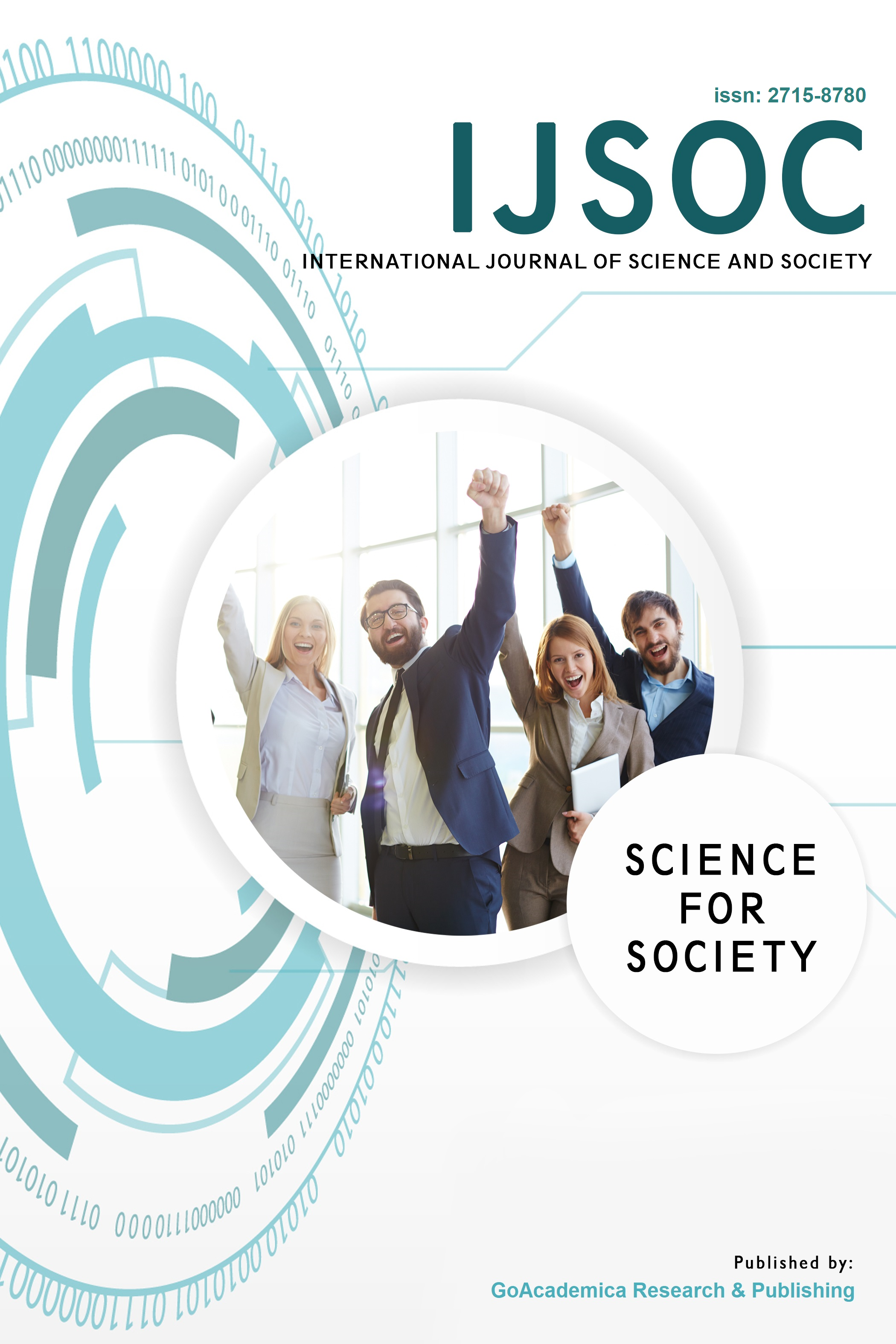The Effects of Restraint and Seclusion on Patients with Mental Disorder: A Systematic Review
Abstract
The restraint and seclusion could worsen condition of patients with mental disorder on several aspects as physical, psychological, and social. Objective: To identify the effects or impacts of restraint and seclusion behavior on patients with mental disorder. This systematic review was initiated to identify literatures on scientific articles which have been published between 2009-2019 in three databases as ProQuest, pubmed, and Sciencedirect. The selection was conducted in PRISMA flow-diagram and criticized through JBI tool. After 10 relevant articles were collected, they would be analyzed to be a systematic review. Most of ten researches illustrated to negative effects on physical and psychosocial aspects as a consequence of restraint and seclusion on patients with mental disorder. A few of positive effects have been also felt, but was not comparable to the negative effect. The implementation of restraint and seclusion behavior could worsen the condition of patients which became a consideration for the health officer to do intervention of restrain and seclusion on patients with mental disorder.
References
Achir Yani Syuhaimie Hamid, M., & Catharina Daulima, N. H. (2018). The experience of restraint-use among patients with violent behaviors in mental health hospital. Enfermeria Clinica, 28, 295–299. https://doi.org/10.1016/S1130-8621(18)30173-6
Brophy, L. M., Roper, C. E., Hamilton, B. E., Tellez, J. J., & McSherry, B. M. (2016). Consumers and Carer perspectives on poor practice and the use of seclusion and restraint in mental health settings: Results from Australian focus groups. International Journal of Mental Health Systems, 10(1), 1–10. https://doi.org/10.1186/s13033-016-0038-x
Buanasari, A., Catharina Daulima, N. H., & Yulia Wardani, I. (2018). The experience of adolescents having mentally ill parents with pasung. Enfermeria Clinica, 28, 83–87. https://doi.org/10.1016/S1130-8621(18)30043-3
Catharina Daulima, N. H. (2018). Preventing Pasung by mentally ill patients’ families. Enfermeria Clinica, 28, 256–259. https://doi.org/10.1016/S1130-8621(18)30079-2
Chieze, M., Hurst, S., Kaiser, S., & Sentissi, O. (2019). Effects of Seclusion and Restraint in Adult Psychiatry: A Systematic Review. Frontiers in Psychiatry, 10(July), 1–19. https://doi.org/10.3389/fpsyt.2019.00491
Darwan, S., Buanasari, A., & Kundre, R. (2019). The Effects of Pasung Prevention Health Education on the Pasung Intension on ODGJ Disability in Prof. DR. V. Ratumbuysang Manado Psychiatric Hospital. E-Journal Keperawatan, 7(1). https://doi.org/10.1017/CBO9781107415324.004
Daulima, N. H. C., Rasmawati, R., & Wardani, I. Y. (2019). The Decline of Family Head Ability In Meeting Family Economic Needs: A Phenomenological Study Experience of People with Mental Disorders post pasung . Jurnal Keperawatan Indonesia, 22(2), 139–146. https://doi.org/10.7454/jki.v22i2.873
Gowda, G. S., Lepping, P., Noorthoorn, E. O., Ali, S. F., Kumar, C. N., Raveesh, B. N., & Math, S. B. (2018). Restraint prevalence and perceived coercion among psychiatric inpatients from South India: A prospective study. Asian Journal of Psychiatry, 36, 10–16. https://doi.org/10.1016/j.ajp.2018.05.024
Larue, C., Dumais, A., Boyer, R., Goulet, M. H., Bonin, J. P., & Baba, N. (2013). The experience of seclusion and restraint in psychiatric settings: Perspectives of patients. Issues in Mental Health Nursing, 34(5), 317–324. https://doi.org/10.3109/01612840.2012.753558
Minas, H., & Diatri, H. (2008). Pasung: Physical restraint and confinement of the mentally ill in the community. International Journal of Mental Health Systems, 2(February). https://doi.org/10.1186/1752-4458-2-8
Puteh, I., Marthoenis, M., & Minas, H. (2011). Aceh Free Pasung: Releasing the mentally ill from physical restraint. International Journal of Mental Health Systems, 5(1), 10. https://doi.org/10.1186/1752-4458-5-10
Shrestha, Y. (2018). Knowledge and Attitude of Family Member of Mentally Ill Patient Regarding Restraint, 2016. Archives of Psychiatric Nursing, 32(2), 297–299. https://doi.org/10.1016/j.apnu.2017.11.018
Soininen, P., Välimäki, M., Noda, T., Puukka, P., Korkeila, J., Joffe, G., & Putkonen, H. (2013). Secluded and restrained patients’ perceptions of their treatment. International Journal of Mental Health Nursing, 22(1), 47–55. https://doi.org/10.1111/j.1447-0349.2012.00838.x
Steinert, T., Birk, M., Flammer, E., & Bergk, J. (2013). Subjective distress after seclusion or mechanical restraint: One-year follow-up of a randomized controlled study. Psychiatric Services, 64(10), 1012–1017. https://doi.org/10.1176/appi.ps.201200315
Strauss, J. L., Zervakis, J. B., Stechuchak, K. M., Olsen, M. K., Swanson, J., Swartz, M. S., … Oddone, E. Z. (2013). Adverse impact of coercive treatments on psychiatric inpatients’ satisfaction with care. Community Mental Health Journal, 49(4), 457–465. https://doi.org/10.1007/s10597-012-9539-5
Swadi, H., & Bobier, C. (2012). Lessons from an investigation of seclusion at an older adolescent inpatient unit. Australasian Psychiatry, 20(2), 98–101. https://doi.org/10.1177/1039856212437431
Visaggio, N., Phillips, K. E., Kichefski, K., McElhinney, J., Idiculla, T. B., Blair, E. W., … Young, S. C. (2018). Is it safe? The restraint chair compared to traditional methods of restraint: A three hospital study. Archives of Psychiatric Nursing, 32(5), 723–728. https://doi.org/10.1016/j.apnu.2018.04.003
Whitecross, F., Seeary, A., & Lee, S. (2013). Measuring the impacts of seclusion on psychiatry inpatients and the effectiveness of a pilot single-session post-seclusion counselling intervention. International Journal of Mental Health Nursing, 22(6), 512–521. https://doi.org/10.1111/inm.12023
Copyright (c) 2020 International Journal of Science and Society

This work is licensed under a Creative Commons Attribution-NonCommercial-ShareAlike 4.0 International License.



.png)

.jpg)
.png)

.png)
.png)
.png)
1.png)

.jpg)



-modified.png)
-modified.png)


-modified.png)



